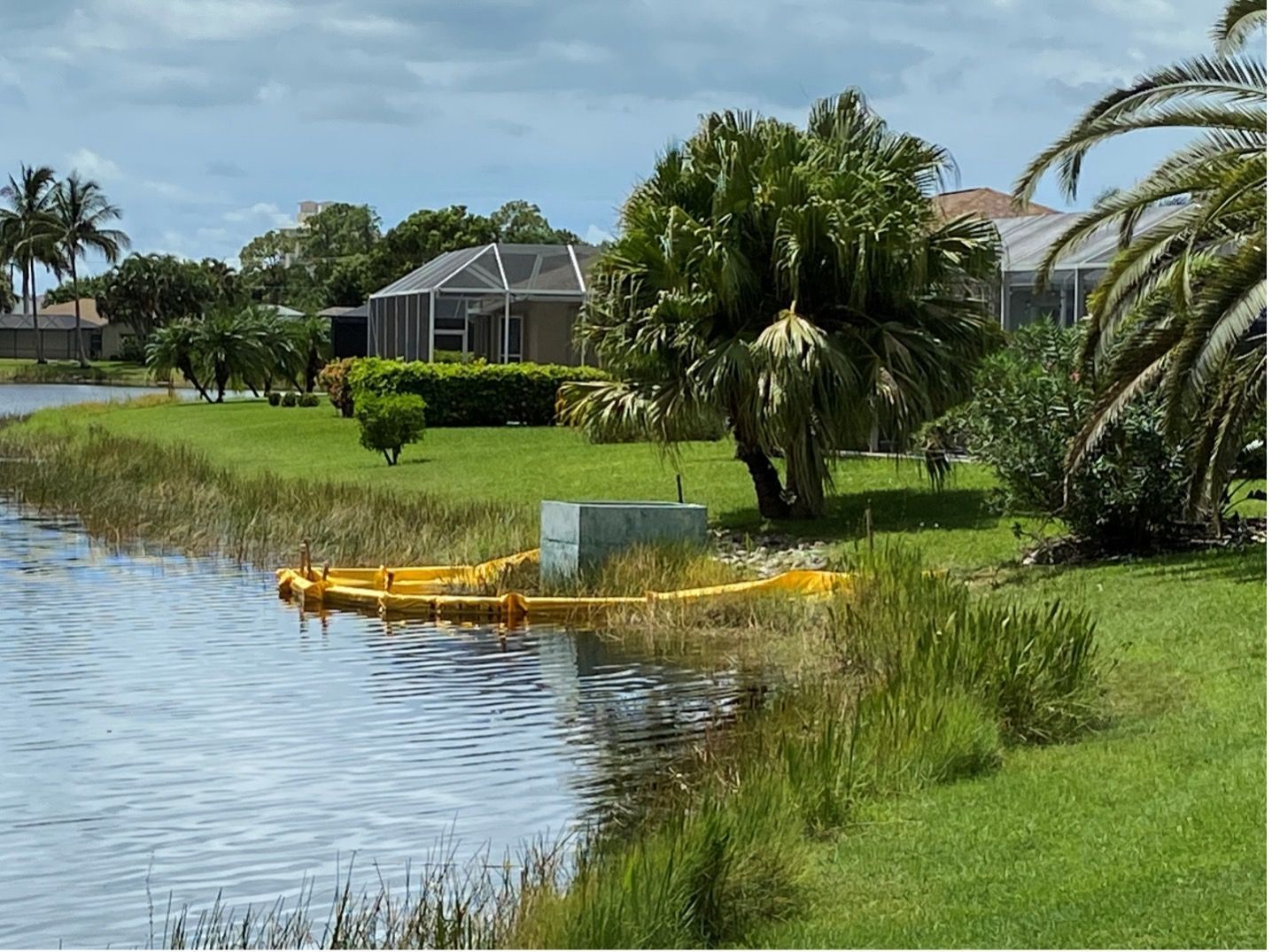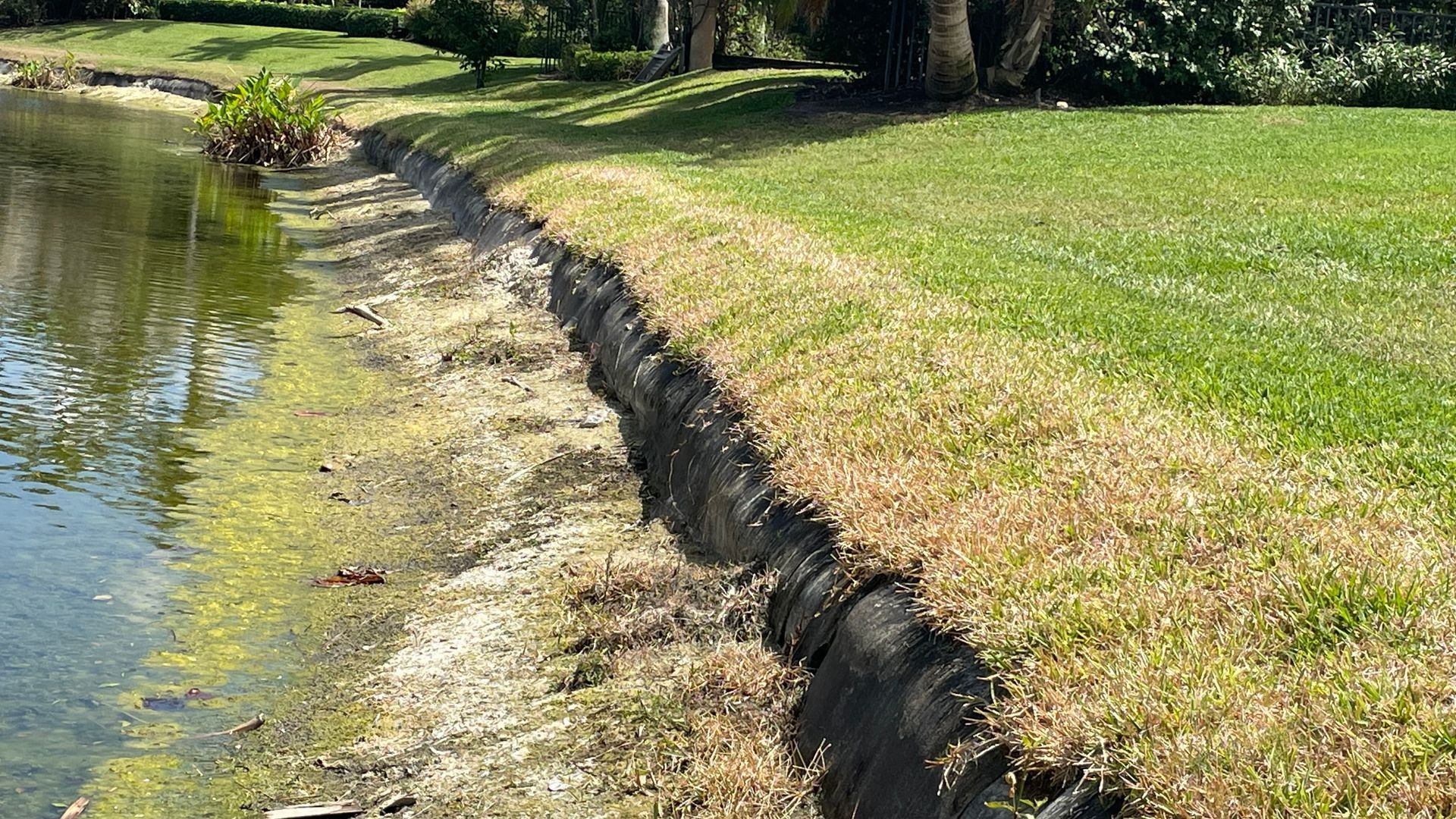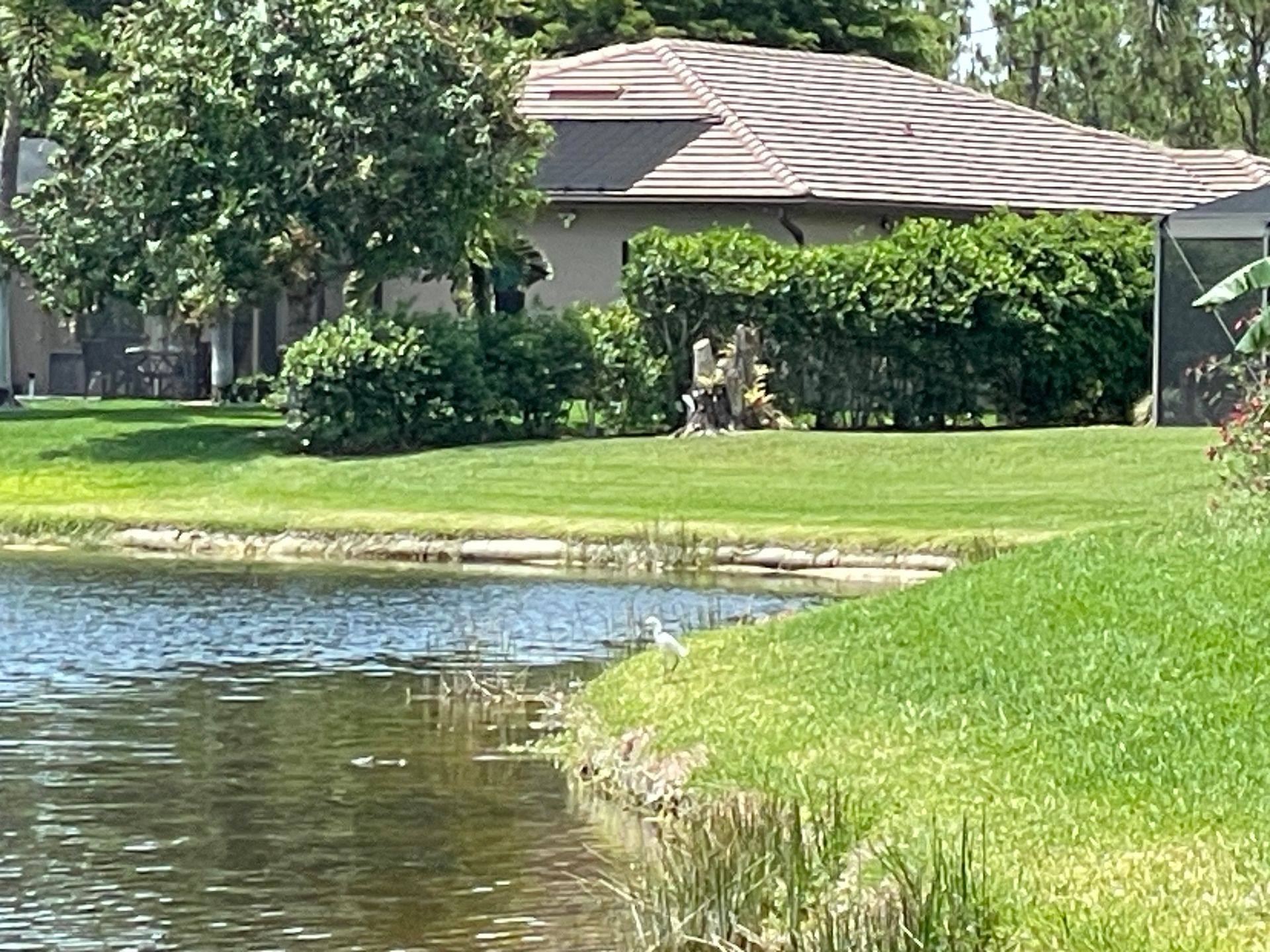Water Volume
Water volume is an important factor in every stormwater management system because it assures that your system is matched to the size of your community. When rainwater enters your gutters in the streets and common areas, it is directed into your lakes. Your lakes become massive retention areas for this rain water. Thus, your lakes must be dug deep and wide enough to hold an appropriate amount of water volume. If they do not achieve this, your stormwater culverts and pipes could fill up and overflow, leading to flooding problems. This is why there is typically some degree of flooding during and after 20-year, 50-year, and 100-year rain events and/or natural disasters… the system is designed to handle an average amount of water volume and simply can’t handle the additional water.

Above picture: A weir (concrete box in middle of picture) helps control the amount of water that flows in or out of a community and can be adjusted to reduce or increate the overall water volume of the lake system. The yellow floatation device around it is called a turbidity curtain.
Some gated communities ask “if we add an imported organic blend to our shorelines won’t that affect water volume?” The short answer is, yes it will, but the effect is negligible. Additionally, dredging up the contaminated “muck” at the bottom of your lake and placing it back on the shoreline is a practice that is generally discouraged by marine engineers who have experience with shoreline stabilization. We have never seen a lake overflow past its control level simply due to the addition of imported fill or dirt.
The volume of water that comes off of the structures (houses, condos, apartments, clubhouse, etc.) also must be addressed when creating a comprehensive erosion control plan. Large structures such as multi-unit condos collect a lot of rainwater and direct it into concentrated areas. This large volume of water must be appropriately handled, either through some type of French Drain system, drainage field, culvert, or armoring the shoreline. Contact us for additional information on these solutions.
Sometimes a lake must be de-watered to reduce its volume temporarily. This exposes the shoreline so that it can dry and stabilization can occur. This additional water is moved into the rest of the community’s lake system while construction is being done. It is then moved back and all lakes find their level once again. This does not damage the lake system in any way and is fairly common in the industry.
Some original Development Orders specify what are called “deep water lakes”. There are many factors that influence the design depth of a lake, but it is mostly due to the availability of land allocated for lake surface area. Often, deep water lakes have Bald Cypress Trees (a Florida native) planted in their corners to help hold in the shoreline and grow roots into the lake. Another scenario is when old quarries are converted into lakes in planned communities which is a fairly common practice in Florida. These quarries can be as deep or even deeper than deep-water-lakes. A bathymetric survey can reveal the lake depths in a community and can also assist in an overall erosion plan.

Above Picture: The trees just above the white rock (rip rap) on this deep water lake are native Bald Cypress Trees. The tree’s trunks and roots must be taken into consideration when designing a shoreline stabilization system so as to not hinder their growth.
So, be sure to address your water volume needs and make sure that volumes are not being drastically altered during any construction activities. Such alteration may require additional permits.
Recent Posts






